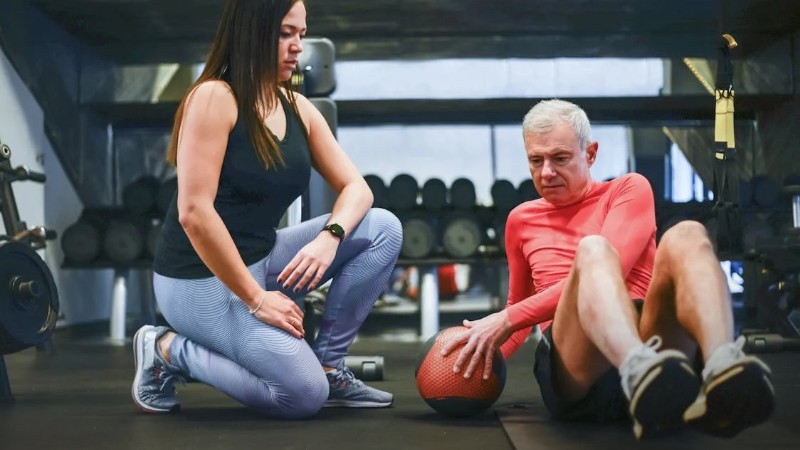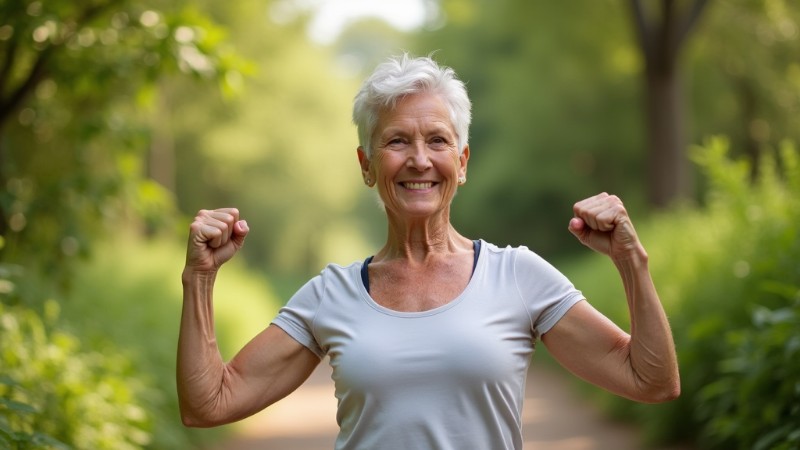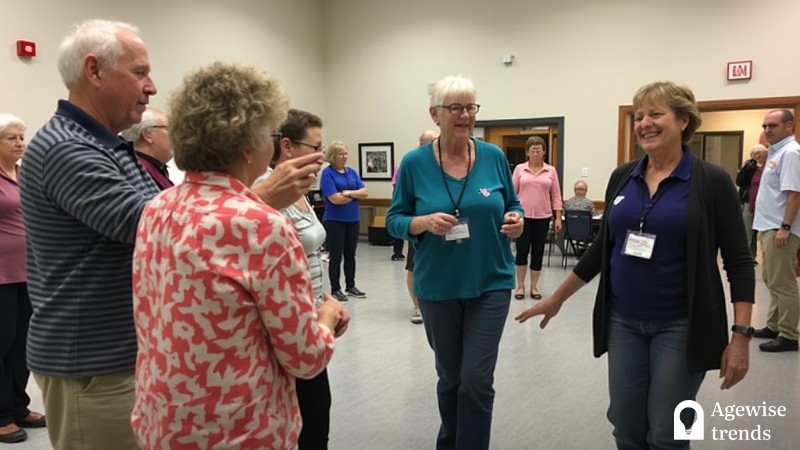Staying strong and flexible is important for moving well, avoiding injuries, and feeling great, especially as you reach the late stages of life. While walking and swimming are good for your heart, don’t skip strength and flexibility exercises. They help keep muscles strong, joints moving well, and maintain your independence as you get older.
A recent survey by NORC and AARP revealed that many older adults are actively trying to improve their health. It showed that 82% of people aged 50 and over started at least one new healthy habit in the past year. Many focus more on physical activities, especially improving strength and flexibility.
Even with more awareness, there’s often a gap between knowing what to do and actually doing it. Many older folks focus on heart health but ignore how crucial strength and flexibility are. If overlooked, it can lead to less mobility, more injuries, and trouble doing daily tasks alone. Understanding their importance and how they aid long-term health is the first step to making them a regular part of your fitness routine.
Key Takeaways
Strength and flexibility exercises are crucial for seniors to maintain mobility, independence, and overall health.
- Strength training twice a week can significantly reduce the risk of dying from any cause.
- Regular stretching and flexibility exercises help prevent falls and maintain joint mobility.
- Physical activity, including strength and flexibility training, boosts mental health and cognitive function.
The impact of strength training on longevity
Strength training helps keep your muscles strong as you age. After 65, muscles weaken faster, even if you are active. This can make it harder to move, increase the risk of falls, and make daily activities like carrying groceries or climbing stairs challenging.
Research shows strength training can slow or even reverse muscle loss. A U.S. survey found older adults who did strength training twice a week cut their risk of dying from any cause by half. This shows how important strength exercises are for living longer.
You should do strength training at least twice a week, focusing on major muscles like legs, back, chest, and arms. Exercises like squats, lunges, and push-ups use your own body weight. Resistance bands can help too, as they are easy on joints but build strength. Lifting weights like dumbbells or kettlebells, or even using household items, boosts muscle strength and endurance. Activities like heavy gardening also help by using multiple muscles naturally.
To see results, push yourself until another repetition feels tough. This tells your muscles to get stronger and build endurance.
Role of flexibility in mobility and injury prevention
Flexibility is often overlooked in fitness routines, yet it is a key component of maintaining mobility and preventing injuries. As individuals age, joint stiffness and a reduced range of motion can make simple tasks—such as bending, reaching, or turning—more difficult. This can increase the likelihood of falls, which are a major health concern among older adults.
Falls are one of the leading causes of injury-related hospitalizations in older adults, often resulting in fractures, decreased independence, and prolonged recovery times. Maintaining flexibility can help mitigate these risks by ensuring that joints and muscles remain mobile and resilient.
Regular stretching improves circulation, reduces muscle tension, and enhances overall movement efficiency. Stretching is most effective when performed after physical activity when muscles are warm, but it can also be done at any time of the day. Experts recommend that stretching exercises be performed daily, holding each stretch for 15 to 30 seconds.
Focusing on key areas such as the neck and shoulders helps prevent stiffness and maintain upper body mobility. Stretching the back and hips supports posture and alleviates lower back pain, which is common among older adults. Maintaining flexibility in the legs, ankles, and wrists is also essential for balance and reducing the risk of falls.
Yoga and Tai Chi are particularly beneficial for improving flexibility while also promoting balance and coordination. These practices emphasize slow, controlled movements that enhance joint health while also reducing stress and promoting relaxation.
Link between physical activity and mental wellness
Exercise is crucial for your body and mind, especially as you get older. Staying physically active can help make you happier, clearer-headed, and less anxious or depressed. It’s not just about staying fit; it also boosts brain power and emotional balance, making it vital for a healthy lifestyle.
Research shows that working out at least once a week can positively impact your physical and mental health. Even simple activities like walking or stretching can boost your mood and energy levels. Regular exercise also helps you sleep better, which is vital for keeping your mind sharp and stress levels low.
One key reason exercise is good for mental health is that it releases endorphins, your body’s natural mood lifters. These endorphins help reduce stress and anxiety, giving you a sense of well-being. Exercise also benefits brain function, reducing the risk of memory loss, dementia, and depression by increasing blood flow to the brain.
Aside from these benefits, exercise is a great way to be social, which is vital for mental health. Studies show that older adults who stay socially active tend to be mentally healthier. Activities like group exercise or walking with friends not only improve physical health but also allow you to connect with others.
Being part of an exercise group can motivate and support you emotionally, helping you stay active and feel like you belong. Social interactions can reduce feelings of isolation and loneliness, making you happier overall. Staying social, whether through exercise or other activities, contributes significantly to your well-being.
Strategies for strength and flexibility training
For older adults looking to incorporate strength and flexibility exercises into their routine, consistency is key. Small, manageable adjustments can make a significant difference over time. Simple body-weight exercises such as squats, push-ups against a wall, or seated leg lifts can help build foundational strength without requiring specialized equipment. These movements target major muscle groups and improve stability, making daily activities easier and safer.
Resistance bands provide an effective, low-impact way to strengthen muscles without the need for heavy weights. They are also highly versatile and can be used in various settings, whether at home or while traveling. Stretching should also be integrated into daily routines to enhance flexibility and prevent stiffness. This can be done while watching TV, after a short walk, or even in bed before getting up in the morning.
Yoga and Tai Chi are excellent options for improving flexibility, balance, and relaxation while reducing the risk of falls and injuries. Many community centers and gyms offer classes specifically designed for older adults, making it easier to engage in these beneficial activities in a structured environment. Maintaining consistency is more important than intensity, so engaging in strength training twice a week and stretching daily, even for just a few minutes, can lead to significant long-term benefits.
Incorporating functional fitness into everyday life can further support strength and mobility. Activities like gardening, carrying groceries, and climbing stairs help maintain endurance while also engaging multiple muscle groups in natural movements. By adopting these simple yet effective strategies, older adults can improve their overall health and maintain their independence for years to come.
Investing in physical health for a longer life
Strength training and stretching are important for older adults who want to stay independent and enjoy a good quality of life. Exercise helps you move better, avoid injuries, and feel mentally strong.
Getting older doesn’t mean losing your strength. It’s a chance to keep your body and mind healthy. By adding strength exercises and stretching to your daily routine, you can move better, lower the chance of falling, and feel happier overall.
Living a long life isn’t just about the years you add—it’s about enjoying those years. By focusing on strength and flexibility, older adults can keep doing what they love, stay independent, and enjoy life fully as they age.













